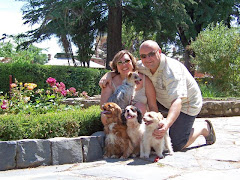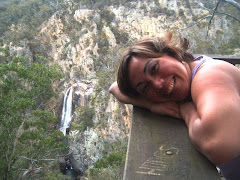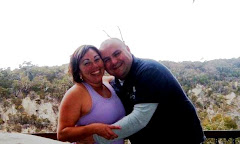 Leading Tickles is one of Central Newfoundland's best kept secrets. Every spring and summer huge icebergs ground themselves upon the shores, making for fabulous photos right from the shoreline! We were too late in the season for icebergs, but not too late for FOG....
Leading Tickles is one of Central Newfoundland's best kept secrets. Every spring and summer huge icebergs ground themselves upon the shores, making for fabulous photos right from the shoreline! We were too late in the season for icebergs, but not too late for FOG.... Today the community has a population of approximately 400. This number fluctuates due to out-migration, and people returning from seasonal employment outside the town. As the name of the community implies, narrow bodies of water wind among coves and inlets and eventually lead to the opening of the Notre Dame Bay.
Today the community has a population of approximately 400. This number fluctuates due to out-migration, and people returning from seasonal employment outside the town. As the name of the community implies, narrow bodies of water wind among coves and inlets and eventually lead to the opening of the Notre Dame Bay.

This is the top of the stairs and bit of board walk. The board walk is actually covered by a snowmobile tread- it worked a treat!


Scott at Jack Ward Memorial General Store and Heritage Centre- on the deck about to enjoy some rocky road....
Back at Oceanview Park- somehow whoever took this photo (Aunt Max) completely missed Aunt Bren and Brian's head- but got my peak a boo instead...


I learned SOOO much about Botwood! I have spent childhood summers here for as long as I could remember and did not know/was not interested in/could not be bothered to learn (take your pick) about how cool Botwood is!
I was rushed through the heritage centre, though because Aunt Bren was eager to get to Leading Tickles (which I now understand why, and so I lead the journal with it in agreement with her about it being a little piece of heaven.)
While the Town of Botwood is geographically confined within a small area, its history is reminiscent of a community ten times its size. Botwood's history has not only played an important role in the development of Newfoundland, but also that of the world. (I know you all think that Jen exaggerates things, but read on and you will see why I say not mockingly "the world".)
Long before the settlement now known as Botwood was established, another group of people were traversing through the area: The Beothuk Indians. The Beothuk Indians were the first North American Indians to be encountered by European explorers. I remember learning a little in year 10 Cultural Heritage about the Beothuk's and remember going to Mary March Musuem in Grand Falls- but this was really interetsing for me.
I also knew that Memorial University of Newfoundland were known as the Beothucks (when mum and dad, Aunt Lin and Uncle Rob attended- you know, in the STONE AGE) and MUN decided it was not in good taste to name one's sporting teams after a decimated people.....
Anyhooser, back to the Beothuk- they had a practice of painting their bodies, clothing, and practically everything they owned with red ochre which led to the early explorers calling them the Red Indians. (This misnomer was subsequently applied to all North American Tribes.) They were a hunting and gathering people who maintained a yearly cycle of movement between the coast and the deep interior.
The people who lived or worked in the Exploits River area between came from varied backgrounds, from fishermen to military to clergy. The furring and salmon industries were closely linked during the early settlement of the area, the fur trade being a secondary source of income for the settlers. In summer, they resided on the coast for easy access to the salmon rivers but wintered inland in the more wooded, protected areas, hunting and fur trapping hare, fox, wolf, beaver, otter, and martin cat (which are now endangered).
The first documented records of any harvesting of Atlantic salmon in the Exploits are dated 1768. The salmon were caught by both the Beothuk and English settlers. Salmon were plentiful in this area, and a number of various nets, tools, and techniques were used to catch the fish. With such a large amount of the local population fishing these salmon rivers, the fish stocks quickly entered into dangerously low levels, and as such, Thomas Peyton, was appointed the first warden for the Exploits River (and who says I never listened in school!!?)
A large part of Botwood's history can be seen and understood through the lumbering and sawmill industries. Private families and public industrial companies have evolved as a part of its development. Were it not for the efforts of a few important individuals, however, the lumber industry in the Exploits Bay would not have been nearly as successful.
During the 1800's the resident Anglican clergyman for the Exploits Bay, Rev. Botwood, became interested in the timber in the Exploits River Valley. (as all clergy are renowned horticulturalist/arborists.....) He recognised the great potential for the lumber industry. (Ah, so he was a BUSINESSMAN/clergy) Before long he had bought up nearly all the land and timber rights from Peter's Arm all the way up the Exploits River to Red Indian Lake. His next move was to get a large sawmill started in Ship Cove. He succeeded in getting the Gooday Company (not G'day- Gooday!) of Quebec City to set up the mill in Ship Cove.
For this effort, the town formerly known as Ship Cove, was renamed Botwoodville in honour of Rev. Botwood. Rev. Botwood, along with his associate, Roland Goodyear, together set up the Exploits Lumber Company in Botwoodville. This was the first mill of importance to be built in Newfoundland.
Botwood has come a long way since the turn of the century. Industry in the area began to develop in the early 1840s with the start up of the first scale sawmill operation, known as the Exploits Lumber Company, of London, England.
Early settlers were also impressed with the nearby town of Grand Falls, (Hi Marilyn!!!) as it was ideal for a paper mill, being only a few miles from the railroad, twenty miles from a deep water harbour, had adequate hydraulic resources ready for development, and was on the bank of the river with the largest water shed in Newfoundland. Thus, the Angle Newfoundland Development Company was born.
The A.N.D. Company hired a great majority of the men in Botwood, and to this day remains as the town's largest employer. The employees laboured long and hard to see that their tasks were properly done, and the A.N.D. Company, now known as Abitibi Consolidated, continues to play a very important role in Botwood's development.
One of the major problems facing the A.N.D. Company in the beginning was that of transporting its product to the shipping facilities in Botwood. Their solution was to build a railway to Botwood.
The A.N.D. Company felt the effects of World War I because of the scarcity of ships to transport its product. The Company began building two large ocean-going schooners at Botwood around 1917, one being the Bella Scott and the other the Sordello. (Who knew Botwood was the source of such industry!!!???- not I)
While Botwood's history as a shipping port has always been relatively prosperous, it has done so despite one serious drawback - the port was often closed by ice during the winter.
Arguably, aviation is Botwood's greatest claim to fame. From 1919 to 1945, Botwood was at the forefront of some of aviation's most important moments in history, pioneering transatlantic flight and playing a vital role in World War II.

Pan Am was studying the possibility of flying mail and passengers over the ocean. Many things were taken into consideration in this study including landing base sites for use in future air routes. Weather conditions were studied and records made.
In 1933 Lindbergh and his wife Anne made a non-stop flight across the Atlantic and landed at Botwood. No one who came to see the seaplane land in the harbour suspected that one day Botwood would have a regular transatlantic flying boat service.
Due to its spacious deep-water inlet of Notre Dame Bay, Botwood afforded ample space for the maneuvering of planes taking off or landing. It had all the facilities for a seaplane base. Because of its fine sheltered hardbour and the fog free zone (I know, it is unbelievable in a place in Newfoundland) in which it lies, Botwood was selected by Pan Am and British Imperial Airways, as their base on this side of the Atlantic.
The first great aircraft brought the town of Botwood into the 20th century. Throughout the 1930s and 40s, two great nations used the town as a base for the world's first regular transatlantic flights.
With the success of the test flights for travel across the Atlantic Ocean, both Pan Am and British Airways were eager to begin their commercial transatlantic passenger and mail service. The service would have to wait, however, as World War II broke out approximately one month after the final test flight.
Newfoundland came into World War II in the early hours of September 3, 1939. That day at approximately 11:00am the people of Botwood became the first on this side of the Atlantic to capture an enemy vessel. (Quick on the uptake, those men in Botwood!)
Ten thousand army and air force troops from various regiments were stationed in Botwood at different periods.
On a lighter side, Botwood was a great place for celebrities who sometimes had to wait here for good flying weather. The Transatlantic Inn, known as the "Dip and Dive", saw a number of personages. Prominent among these visitors was Charlotte, the Grand Duchess of Luxembourg. The Rt. Hon. Winston Churchill was forced to wait over for an afternoon and evening in Botwood in November 1942. Besides these dignitaries, celebrities such as Bob Hope and Frances Langford entertained troops during their short tenure in Botwood.
And of course, this rogue's gallery: Aunt Bren, Brian, myself, Aunt Max and Uncle Rob!



Aunt Bren and Scotty agreed with me- it was a pretty cool place.

Thanks to Aunt Max and Uncle Rob for a great couple of days- the moose burgers and fish and brewis more than made up for the rain, drizzle and fog....












No comments:
Post a Comment